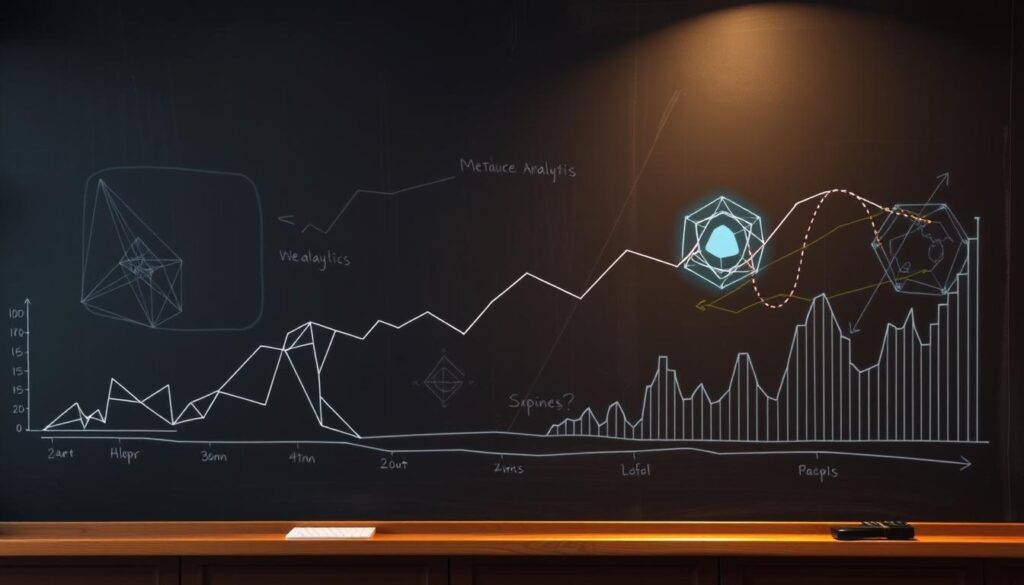Imagine scrolling through job listings for hours, polishing your resume until midnight, only to get zero responses. That’s what happened to Sarah, a junior analyst with two years of experience. She knew her technical skills were strong, but her applications kept disappearing into the hiring void. Then she discovered a game-changer: strategically showcasing industry-relevant modeling techniques transformed her resume from ignored to interview-ready.
Like Sarah, you might be missing the key ingredient hiring teams want: proof you can translate raw information into business solutions. This guide reveals the exact frameworks employers prioritize, plus how to present them effectively. We’ll also show how tools like RoboApply’s AI resume builder and ATS optimizer turn your expertise into interview invitations.
Key Takeaways
- Identify the most sought-after technical frameworks in today’s job market
- Position your expertise to showcase problem-solving abilities, not just technical jargon
- Align your skills with specific business outcomes employers value
- Use RoboApply’s AI tools to optimize resume formatting for automated systems
- Prepare real-world examples that demonstrate your impact during interviews
Understanding Data Modeling Fundamentals
Ever wondered why some technical resumes grab attention while others get filtered out? The answer often lies in demonstrating structured thinking through foundational skills. Think of modeling as building highways for information – it determines how smoothly insights travel from raw numbers to business decisions.
The Role of Frameworks in Shaping Insights
Effective systems organize information like a well-designed library. They map relationships between different elements, ensuring teams ask better questions. For example, labeling customer tables with precise definitions prevents miscommunication between marketing and finance teams.
Creating Shared Language Through Documentation
A clear inventory of terms acts like a translator for complex systems. When you define “active user” as someone who logged in twice weekly rather than vaguely, you eliminate guesswork. This precision becomes crucial when collaborating with technical teams to maintain standards.
- Simplify complexity: Filter out irrelevant details to focus on what drives decisions
- Build alignment: Standardized labels help stakeholders interpret information consistently
- Showcase precision: Use RoboApply’s grammar checker to polish technical descriptions
These practices prove you don’t just work with numbers – you create systems that make numbers work for businesses.
data analyst data analysis models: Key Concepts & Differences
Picture this: You’ve mastered SQL and Python, but your resume still isn’t getting traction. The missing piece? Showcasing structured approaches to solving business challenges. Let’s break down the frameworks hiring managers want to see.

- Three Stages of Structured Thinking
- Start with conceptual mapping (business needs), then logical design (relationships), and finally technical implementation. Example: Designing a customer retention system begins with broad goals before diving into database specifics.
- Database Architectures Demystified
- Relational systems excel for financial records, NoSQL handles social media streams, and graph techniques map supply chains. Mentioning all three proves you match tools to problems.
- Six Strategic Approaches
- From descriptive (what happened) to predictive (what’s next), each method serves unique purposes. Data analytics vs data analysis requires different frameworks – specify which you’ve used in projects.
RoboApply’s ATS Optimizer scans your resume for these keywords, ensuring systems recognize your technical range. One user increased interview invites by 40% after highlighting graph modeling skills.
Pro Tip: Pair each technique with results. Instead of “used predictive modeling,” write “forecasted inventory needs with 92% accuracy.” This shows hiring teams exactly how you create value.
Incorporating RoboApply Tools to Enhance Your Resume
You’ve polished your skills – now it’s time to package them. RoboApply’s suite transforms how you present expertise to hiring teams. Let’s explore how these features work together to showcase your strengths effectively.
Utilizing the AI Resume and Cover Letter Builder
- Craft attention-grabbing summaries: The AI resume builder turns technical experience into compelling stories. Input your role details, and it generates achievement-focused bullet points that highlight business impact.
- Personalize applications effortlessly: Use the cover letter tool to align your skills with specific job needs. It scans job descriptions and suggests relevant keywords to include, saving hours of manual tweaking.
Leveraging ATS Optimizer and Interview Coach Features
- Beat automated filters: The ATS optimizer checks your resume’s formatting and keyword density. One user saw a 60% increase in callbacks after fixing hidden issues like incompatible headers.
- Master technical conversations: Practice mock interviews with the coach feature. It provides feedback on explaining complex processes in simple terms – crucial for cross-functional roles.
Additional time-saving tools streamline your search:
- Auto-apply extension: Submit applications in 1 click while browsing job boards
- Job tracker: Monitor follow-ups for modeling-focused roles
- Outreach CRM: Build relationships with hiring managers
- Grammar checker: Maintain professionalism in every document
The Evolution of Data Analysis Models
Remember when businesses stored information in rigid systems? The cloud revolution reshaped how we handle raw material, creating new career paths for professionals. Explore this transformation through five pivotal changes every modern practitioner needs to know.

- From ETL to ELT: Older systems transformed information before storage, limiting flexibility. Cloud platforms now let teams store first, process later. This shift demands skills in managing diverse frameworks across multiple stages.
- Cost Revolution: Separating storage from processing slashed expenses. Companies collect 10x more material than a decade ago, requiring experts who optimize systems for scalability.
- Model Proliferation: With cheaper storage comes more experimental approaches. Organizations need specialists who maintain clarity across 50+ frameworks simultaneously.
- Skill Expansion: Modern roles blend traditional methods with new tools. Highlight your ability to bridge SQL databases with real-time stream processing.
- Career Positioning: Showcase adaptability through specific examples. Instead of “used cloud tools,” write “migrated legacy systems to AWS, reducing processing time by 35%.”
RoboApply’s AI resume builder helps frame these changes as career assets. One user landed three interviews weekly after emphasizing their ELT migration experience. Stay ahead by demonstrating how you evolve with industry shifts.
Best Practices in Data Modeling for Career Growth
Ready to transform technical skills into career opportunities? Mastering these eight strategies positions you as a problem-solver who bridges business needs with technical execution.
Defining Business Objectives to Drive Model Relevance
Start every project by asking: “What decision will this enable?” A marketing team needing attribution clarity doesn’t want raw numbers – they need tables comparing first-click and last-click customer journeys. Use RoboApply’s AI summary generator to translate technical work into business outcomes like “Optimized campaign spending by 18% through multi-touch attribution models.”
Maintaining Granularity and Clean Data Sets
Balance detail with usability. A retail inventory system tracking individual products needs item-level precision, while executive dashboards require summarized trends. Implement checks like:
- Automated validation rules for incoming information
- Version control for evolving business needs
- Collaboration workflows with technical teams to maintain standards
Document every choice – why granularity levels were set, how anomalies get resolved. This proves you don’t just build systems, but create scalable solutions that grow with companies. One analyst landed a promotion by showing how their clean datasets reduced reporting errors by 40%.
FAQ
How do data modeling skills improve job prospects for analysts?
Mastering data modeling demonstrates your ability to translate raw information into actionable insights. Employers value professionals who can design efficient database structures, optimize queries, and align technical processes with business goals—skills directly tied to roles like business intelligence analyst or data engineer.
What’s the difference between a conceptual model and a physical model?
A conceptual model outlines high-level relationships between entities (e.g., customers, orders), while a physical model defines exact implementation details like storage formats or indexing. For example, tools like ER/Studio or SQL Server Management Studio help bridge this gap during development.
Why are tools like Tableau or Power BI critical for modern analysis?
Platforms like Tableau simplify visualizing trends from complex datasets, making findings accessible to non-technical stakeholders. Including these in your resume shows proficiency in transforming SQL queries or Python outputs into dashboards that drive decisions—a key expectation in marketing or operations roles.
How does RoboApply’s ATS Optimizer help with technical resumes?
The ATS Optimizer scans your resume for keywords like “predictive modeling” or “ETL pipelines,” ensuring alignment with job descriptions. It also checks formatting compatibility with systems like Workday or Greenhouse, reducing rejection risks caused by parsing errors.
What common mistakes should beginners avoid in data modeling?
Overlooking data granularity (e.g., aggregating sales per hour vs. per day) or failing to document schemas can lead to inaccurate reports. Always validate models against real-world scenarios using tools like Apache Airflow for testing pipelines before deployment.
Which industries prioritize specific analysis frameworks?
Healthcare relies on HL7 FHIR for patient data interoperability, while e-commerce uses RFM analysis (recency, frequency, monetary) for customer segmentation. Tailor your resume by highlighting domain-specific tools like SAS for finance or Google Analytics for digital marketing.


















